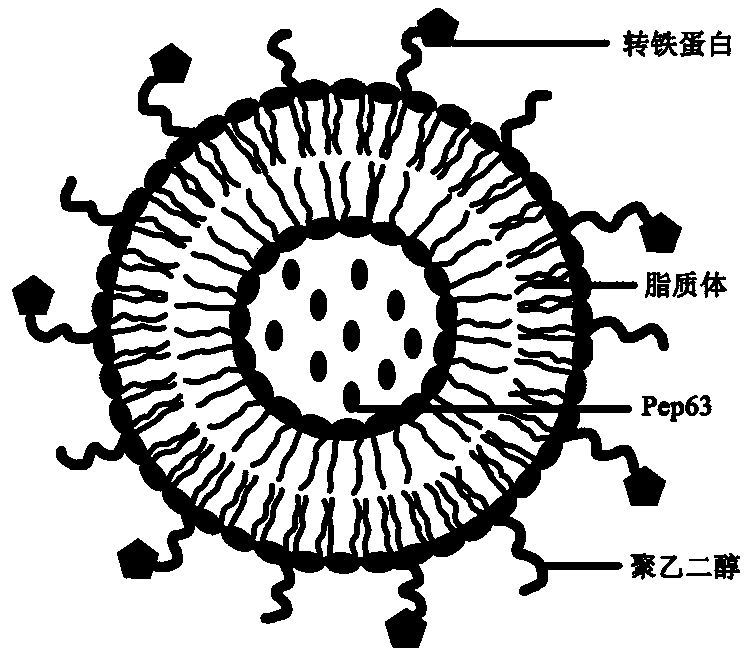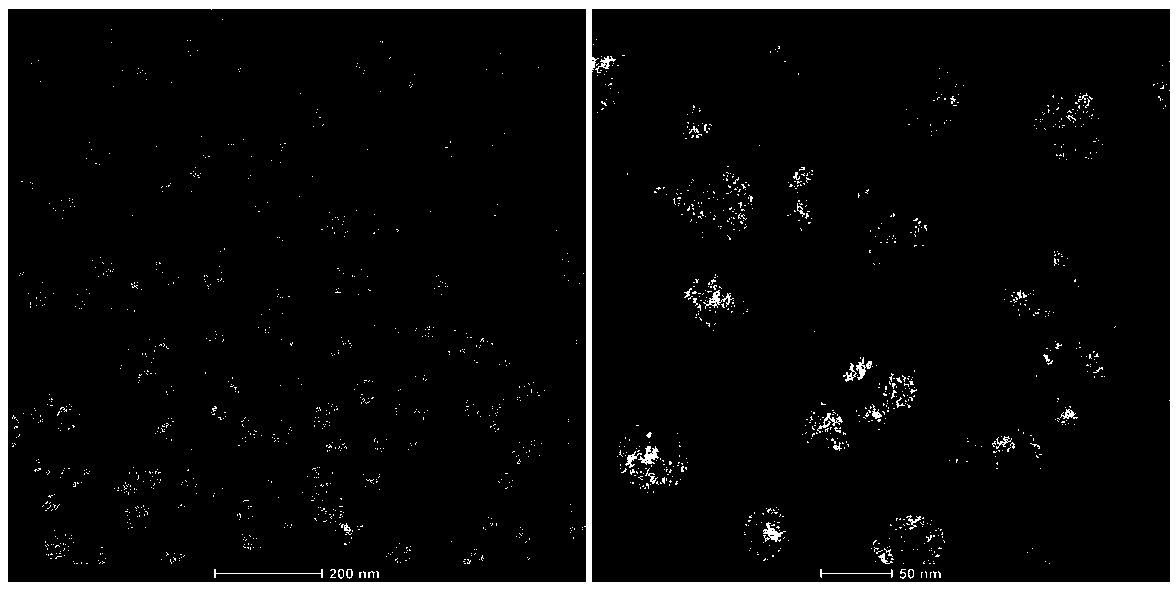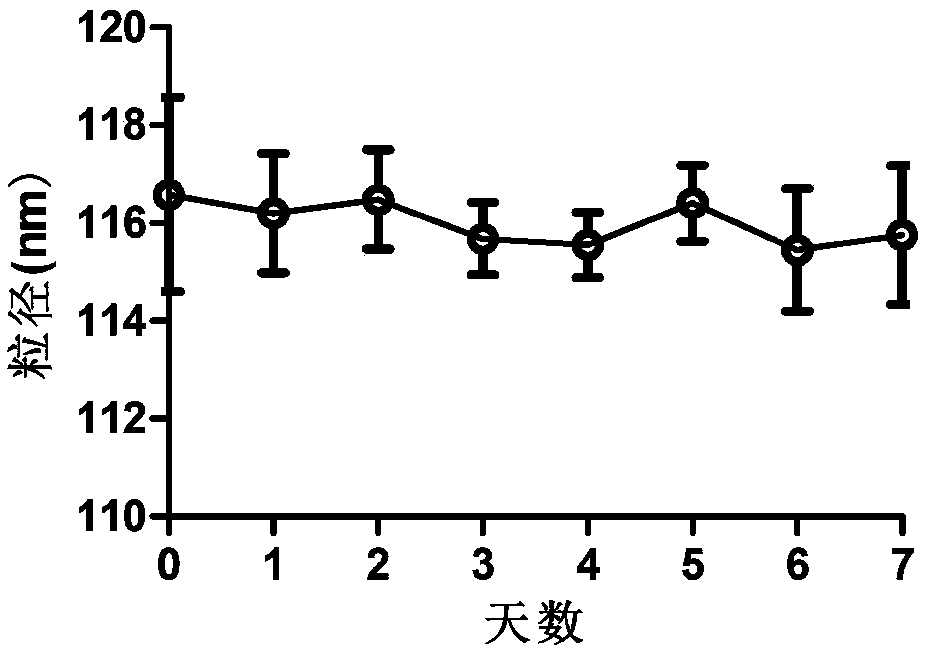A nanocomposite with therapeutic effect on Alzheimer's disease, and preparation method and application thereof
A technology of Alzheimer's disease and nanocomposite, applied in the field of medicine, can solve the problems of early cognitive dysfunction, abnormal synaptic function, functional disturbance, etc., so as to delay the pathological process and treatment, increase the stability, and achieve a high degree of safety. sexual effect
- Summary
- Abstract
- Description
- Claims
- Application Information
AI Technical Summary
Problems solved by technology
Method used
Image
Examples
Embodiment 1
[0038] Embodiment 1 carries the preparation of Pep63 multifunctional nanocomposite, comprises the following steps:
[0039](1) Dissolve lecithin Epc, cholesterol Chol, phosphatidic acid PA, distearoylphosphatidylethanolamine-polyethylene glycol-carboxylic acid DSPE-PEG2000-COOH in dichloromethane at a molar ratio of 60:20:3:6 In the mixed solution of methane and methanol (volume ratio is 2:1), the solvent is removed by vacuum rotary evaporation, and the lipid film obtained is hydrated with the protective small peptide Pep63 solution (medicine lipid feeding mass ratio is 1:10), ultrasonic ( 250mM, 5mL) in a water bath for 5min, the mixed solution was placed in a dialysis membrane (MWCO 3,000Da) and sealed, and stirred and dialyzed in HEPES buffer solution (HBS, 25mM HEPES, 150mM NaCl) overnight.
[0040] (2) The next day, use 1-ethyl-(3-dimethylaminopropyl) carbodiimide hydrochloride (EDC·HCL) and N-hydroxysuccinimide (NHS) (PH 5.5) to activate di carboxyl group in stearoylpho...
Embodiment 2
[0041] Example 2 Characterization and stability evaluation of the Pep63-loaded multifunctional nanocomplex.
[0042] 1. Drop the Pep63-loaded multifunctional nanocomposite prepared in Example 1 on the surface of the copper mesh for 5 minutes, carefully blot the excess liquid with filter paper, negatively stain with 2% uranyl acetate for 3 minutes, and observe its shape with a transmission electron microscope; dynamic laser Particle size analyzer (DLS) was used to detect its particle size, potential, and polymer dispersibility index (PDI); high performance liquid chromatography (HPLC) was used to detect the encapsulation efficiency of Pep63; the change of particle size in seven days reflected its stability. As shown in Table 1, the average particle size of the Pep63-loaded nanocomplex (Tf-Pep63-Lip) modified by the dynamic laser particle size analyzer (DLS) was 116.58 ± 3.97 nm, and the Zeta potential was -5.78 ± 1.10 mV. The polymer dispersibility index PDI was 0.237, which re...
PUM
| Property | Measurement | Unit |
|---|---|---|
| particle diameter | aaaaa | aaaaa |
| dispersity | aaaaa | aaaaa |
Abstract
Description
Claims
Application Information
 Login to View More
Login to View More - R&D
- Intellectual Property
- Life Sciences
- Materials
- Tech Scout
- Unparalleled Data Quality
- Higher Quality Content
- 60% Fewer Hallucinations
Browse by: Latest US Patents, China's latest patents, Technical Efficacy Thesaurus, Application Domain, Technology Topic, Popular Technical Reports.
© 2025 PatSnap. All rights reserved.Legal|Privacy policy|Modern Slavery Act Transparency Statement|Sitemap|About US| Contact US: help@patsnap.com



